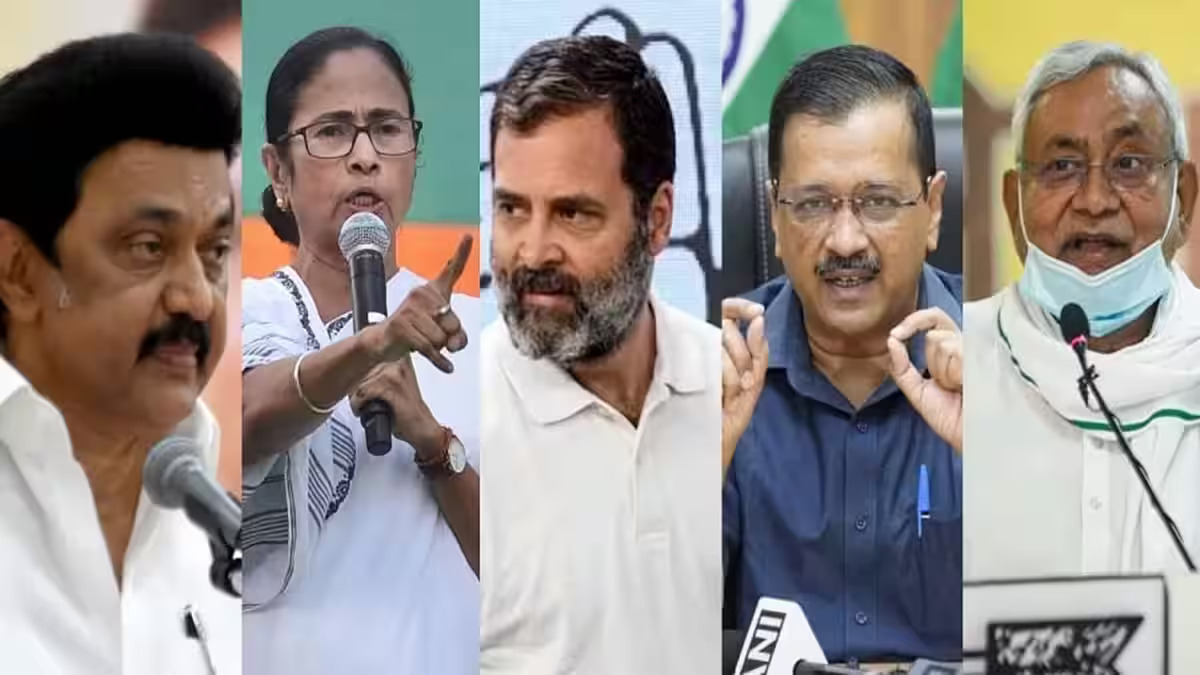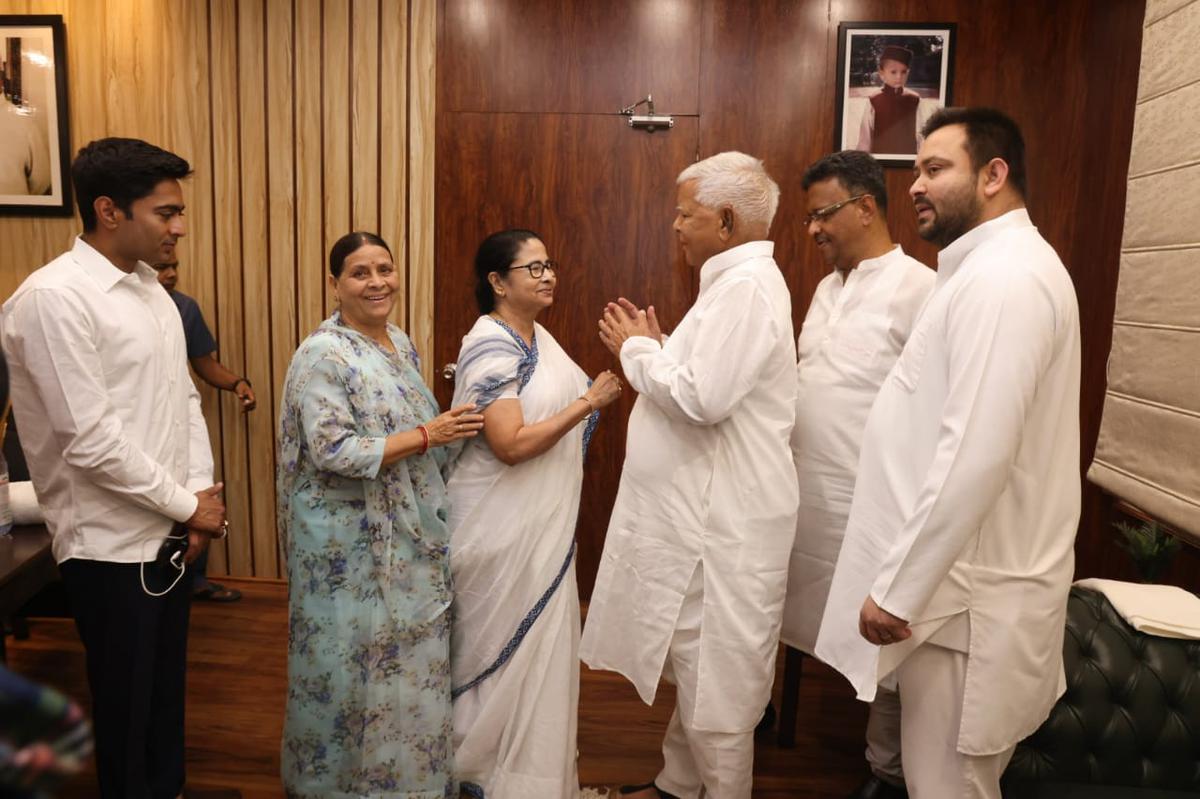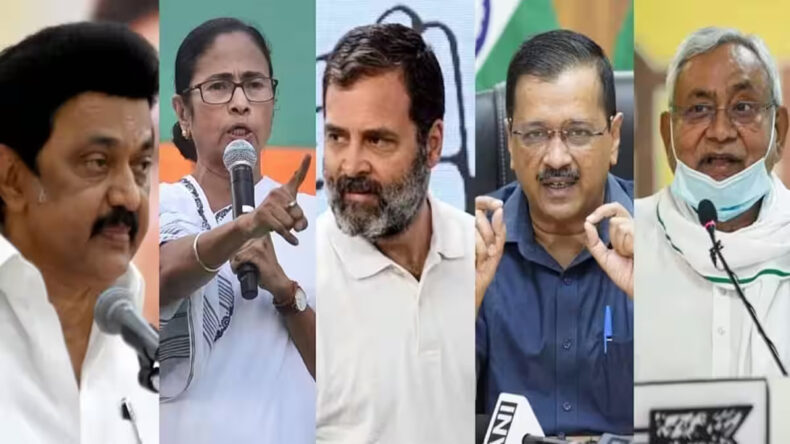32 leaders from 15 different political parties were present during a successful opposition meeting on 23rd June in Patna under the host of Nitish Kumar. The meeting is being seen as a one-step victory against BJP for the 2024 Lok Sabha elections and the credit goes to the Bihar Chief Minister, Nitish Kumar for being able to bring all the parties under one roof.

Image Source: Indian Express
According to reports, Nitish Kumar went above and beyond to make sure that all the visiting leaders were at ease and treated with respect. Nitish controlled the conversation even at the press conference, allowing others to speak the majority of the time.
When different political leaders come together, the obvious disagreements are bound to happen but during the meeting, the only blip was the AAP’s criticism of the Congress for taking an uncommitted stance regarding the Centre’s decree restricting the powers of the Delhi government. Omar Abdullah of the National Conference is reported to have reminded AAP of its support for the repeal of Article 370 in the same context. Although the discussion lasted nearly four hours, this was still a relatively minor portion of it.
How did Nitish successfully bring all the parties together?
The greatest benefit of Nitish Kumar is his acceptance by different leaders and it is this acceptance that brought parties like AAP, Trinamool and Samajwadi Party in the meeting who stand directly against Congress.
All of the present leaders spoke in unison during the press conference. It’s also significant that they agreed to get together again in the second week of July to talk about things like seat-sharing and a shared agenda.

Image Source: The Hindu
It’s a significant accomplishment for the first meeting and especially for Nitish Kumar who brought everyone together if the parties have already decided to discuss coalitions and a shared plan in their next meeting. Kumar has solidified his position as a contender for the 2024 Lok Sabha elections with this meeting.
But is Kumar a strong contender for 2024?
According to the May 2024 NDTV-CSDS survey, barely 1% of respondents chose Nitish Kumar as their option for the next prime minister. In the poll, he was ranked behind Rahul Gandhi and Prime Minister Narendra Modi, as well as fellow chief ministers Arvind Kejriwal and Mamata Banerjee (4 per cent each), and former chief minister Akhilesh Yadav (3 per cent).
So, what works for Kumar? Well, the fact that Kumar is likeable is to his advantage. He already leads a coalition that includes the JD-U, RJD, Congress, CPI-ML, CPI, and CPI-M because he is the chief minister of Bihar. He also has good relations with Congress allies like DMK, Shiv Sena-UBT, NCP and JMM. But his acceptability among AAP, Trinamool and SP is what makes Nitish stronger than leaders like Rahul Gandhi.
Only in a post-election situation would Nitish Kumar be able to become prime minister. Nitish Kumar’s popularity with leaders like Patnaik or even Chandrababu Naidu may be helpful if the Opposition alliance somehow succeeds and approaches establishing a claim for governing the government. While all this will only be possible if NDA gets below 250 seats.
Questions that need to be answered during this opposition meet
- Who will be the face of the rally or will there be one?
PM Modi has been portrayed by the BJP as a strong, decisive leader with a proven track record in national security and a wide range of social programmes with widespread caste-neutral beneficiary support. A strong leader for the opposition to unite around would, in the opinion of many non-BJP parties, provide direction. It won’t be simple for the opposition to choose a candidate, though, with figures like Nitish Kumar, Mamata Banerjee, Mallikarjun Kharge, Sharad Pawar, and Rahul Gandhi in the Congress, NCP, and Trinamool Congress, respectively.
- What will be the share of seats?
Given the past conflict between the Congress, TMC, and AAP, Delhi and West Bengal are viewed as the main obstacles to opposition unity. In states where numerous opposition parties have significant stakes, such as Jharkhand, Kerala, and Uttar Pradesh, it is still unclear how seat-sharing agreements would be implemented. These states collectively represent 130 Lok Sabha seats. It would be fascinating to see what will transpire in states like Odisha and Andhra Pradesh, where organizations like the YSR Congress Party (YSRCP) and BJD have mostly elected to maintain a neutral stance towards both the Congress and the BJP.
- Congress is the largest among all, will it give space to the regional parties?
Given that it is the largest party and sees itself as the only viable national alternative to the BJP, Congress feels it has a right to serve as the focal point of efforts to unify the opposition. The party’s goals have only been bolstered by its triumph in Karnataka. Nitish Kumar, however, has been given the challenging responsibility of persuading the other parties, which is why he is emerging as the opposition’s focal point. Recall that the Congress only won seats in one state, Kerala, and failed to win any in 20 states or union territories in 2019. In contrast, the BJP won 224 seats, up from 136 in 2014, with a vote share of more than 50%.
The TMC recently stole the lawmaker, Bayron Biswas, three months after the Congress won its first MLA from the Sagardighi Assembly seat in a by-poll, which sparked fresh verbal spats between the Congress and TMC. Sagardighi’s departure was a major defeat for the TMC and called into question the notion that Muslims favour the party. The Congress, which frequently refers to AAP as the BJP’s B-team, has suffered as a result of the party’s growth. It won’t be simple to convince regional parties to make changes and give the Congress space because the Samajwadi Party has previously criticised its coalition with the Congress as a negative experience.












